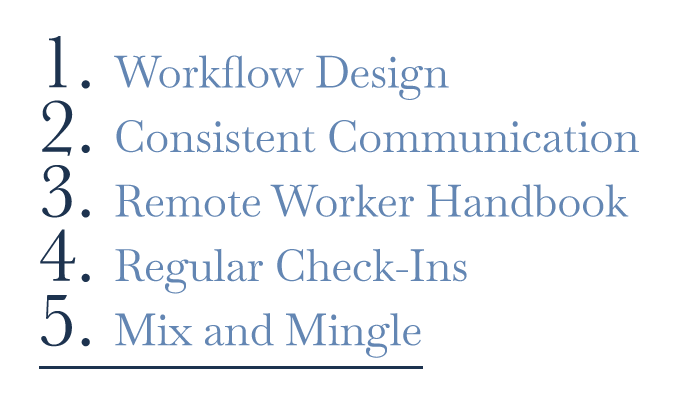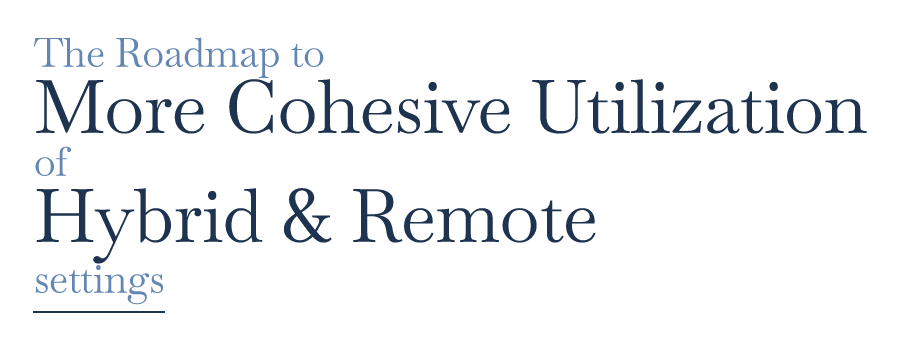Remote Work In A Lab Setting
10 Min. Read

Unfortunately, very few labs could accommodate remote work before the pandemic. The shift for most labs has been quick and strained, with the change being huge but necessary. This shift has also been in parallel with our efforts to combat the SARS CoV2 virus, for which we rely on cell/biotech work. We must build more solutions for lab workers to perform their jobs most effectively to keep moving forward. 'Wet' labs especially need remote solutions, as their work depends on the physical space. There is currently a demand for online learning access, and the life sciences space is only growing.
The Problem is Deeper Still
Pharmaceutical and biotech research demand care and precision. Understanding and developing cells for our society and our planet's health is no small task. Biotech workers must work in commercial and academic laboratories to advance in the field. However, the safety precautions necessitated by the COVID-19 pandemic have burdened this research even as it is so clearly needed.
Much, if not most, biotech research requires the specialized equipment available only in a laboratory setting. Those who still need to work in a lab have seen their responsibilities grow and their working time decrease as they accommodate new safety guidelines.
Safety requirements around physical distancing and sanitization of common surfaces have had an outsized impact on the effectiveness of lab research. Quality of life worker accommodations, such as coffee machines, cafeterias, and even freedom of movement, have been restricted or removed. Shared equipment and spaces are now a danger zone and are treated as such.
Working together in a lab is crucial for several different reasons. Lab work is physical, partly because it is necessary to have direct and immediate interaction between biotech researchers who can depend on collaboration to develop their work. However, collaboration is no longer easy because of new physical distancing regulations.
New workers require more supervision and mentoring to ensure a safe laboratory environment. It's also critical that those introduced to a lab setting are familiar with the rules and regulations of such an environment. Doing lab work separately can cause delays in responses, which causes a delay in work progress.
Solutions for Integrating New Workers
With the influx of new workers, they must have proper training and be aware of the lab's safety procedures. How can you integrate these new employees into your lab while maintaining efficiency? Here are some solutions:

1. Workflow Design
A key component of improving remote lab work is designing the workflow for remote workers to efficiently complete experiments without interruption. This means identifying how much training each employee needs before working independently and ensuring no significant risks are associated with the tasks assigned to them by their supervisors or managers.
2. Ensure Constant Communication
Establish and ensure consistent communication through video calls and messaging apps like Slack. These tools allow you to communicate with your remote workers as if they were sitting beside you. They also make it easier for you to answer questions during the workday and provide feedback on tasks or experiments being performed.
3. Provide a Remote Worker Handbook
Create a handbook that includes expectations such as availability, workload distribution, time off requests, and more.
4. Schedule Regular Check-Ins
Do this with your remote workers so everyone knows what's happening in the company and there are no potential miscommunications between employees or departments.
5. Mix and Mingle
Make them feel more at "home" by immediately including them in company outings to associate with other employees. Or, if there is a need to onboard multiple candidates, host a meet and greet gathering and include a brief time to introduce company updates.
Fostering Meaningful Relationships is Far More Challenging
Another essential interaction to take a hit with social distancing in labs is the relationship between lab workers and the academic community. These connections have, in the past, been forged through the physical world, and with that no longer possible, lab workers are not making the contacts they would have otherwise, which can easily affect their careers in the long term. More fundamentally, it's also critical that those working in a lab are familiar with their equipment to guarantee they work most effectively and safely.
Solutions for Cultivating Meaningful Relationships with Colleagues
Social distancing in biotech labs has negatively impacted growing relationships, communication, and collaboration. Here are three ways to improve remote lab work in biotech:
- Introduce "Lunch-and-Learns": Create an open environment that encourages creativity and collaboration between employees and their colleagues. Employees can build relationships and develop ideas that could improve their work performance. Or lead them down new career paths, for example, by providing a space for brainstorming sessions and offering "lunch-n-learns" where colleagues can meet up for lunch and learn about new techniques or processes.
- Conduct Brainstorm Sessions: Team members often have concerns and solutions for remote and hybrid work challenges. Institute in-person brainstorming and breakout sessions where employees and leadership can problem solve in small groups to develop plans for overcoming hybrid and remote work challenges, creating opportunities for relationship building.
The Scheduling Dilemma
Most labs now have a maximum number of biotech researchers who can be in the lab simultaneously. To achieve this, it becomes essential to have advanced scheduling in place. This scheduling issue presents another difficulty.
It is often necessary for lab work to be flexible and adaptive, but now that is no longer encouraged. A lab worker cannot spontaneously adjust their schedule to accommodate their workflow. They must leave the lab as soon as their work is done or scheduled to be done.
Time is a massive factor for lab work and a colossal casualty of new health-focused regulations. Going in and out of a lab constantly can be time-consuming, especially in high containment labs requiring even more protective equipment than standard labs.
A Solution for Scheduling and Flexibility
While there is probably no perfect plan for the complexities of this matter, here is an idea that may work with your team with some tweaking and feedback:
- Lab rotations: Work with your team to schedule lab rotations monthly. This rotation gives employees opportunities to switch up their schedules. They can work from home on days they are not scheduled for lab work. Implement a flexible plan that allows employees to come in and out at different times each day and week. This will allow them the freedom to work when they are most productive.
Is Remote Monitoring Solving the Problem?
Other methods to reduce the number of workers in a lab are remote monitoring and tools like Holo4Labs. Remote monitoring is an online tool that allows biotech researchers to check their cell development on their computers without entering the lab space. Because this means it's no longer necessary for lab workers to check on their work's progress physically, workers can get back some of the time they lost. However, despite the benefits, remote monitoring is not seamless.
Remote monitoring assumes worker access to the internet and other technology; if someone does not have access to these things, they're back at square one. Tools like Holo4Labs allow a supervisor to issue instructions spread out to individual biotech researchers remotely. This tool cuts down on the number of people needed in a lab and provides an opportunity for more miscommunication.
Suppose a lab manager or principal investigator is issuing directions remotely. If that is the case, the instructions given may not be as current or applicable as if they were present. We lose nuances of language through digital communication, and it can become difficult for supervisors and researchers to be on the same page.
The Benefits of Remote Monitoring
There are, however, benefits to moving toward remote monitoring. Remote monitoring ensures a more effective way of storing collected data by removing human errors. It can also cut down the time it takes to complete a live-cell imaging experiment, allowing what would be days of lab work to be done remotely. Remote monitoring tools, such as an automated live-cell imaging solution, can track several cells simultaneously. This allows human researchers to see how cells develop at different rates more quickly and effectively, indicating a conclusion.
Elements of the roadmap to more cohesive utilization of hybrid and remote settings have been covered throughout this piece. What is about to be shared are other vital things to remember as you may desire to construct your roadmap, but see it as a living document that can be tweaked rather than a document set in stone. Just like we have to see this idea of hybrid and remote working with a flexible perspective, we must see our ideas to improve things with more flexibility.
Here are some considerations to ponder:
Worker Equality Must Be Considered
There is also the issue of worker equality. When supervisors can work from home and biotech researchers are still required to be physically present in a lab, it can create or exacerbate a gap between labor and management. Managers need to understand the difference between their expectations and those of others working in a lab. Empathy is now a necessary qualification for biotech lab managers, as they are leading those who don't have the same working conditions that they, as managers, are afforded at home. Communication is key. To not lose people, it's critical to avoid managing from above and issuing directions without being involved.
Communicate Trust to Your Employees
In a time of crisis, it is important to be clear about the reasons for a change in policy. In this case, managers and leaders of labs requesting workers to come back to work into a hybrid situation should let their employees know it is not because they don't trust them, but that the nature of the work is most effective when there is at least some on-site work.
The ability to understand and mitigate risk requires both expertise and experience; therefore, it is important for all lab workers to be present on-site to ensure that the proper protocols are followed.
Make Changes that Better Accomodate Disabled Work
In order to make lab work settings more accommodating for disabled people, it is important to understand the ways in which these settings can be made more conducive. The first step in this process is to hire professionals who are able to help the environment become more conducive to the needs of disabled people. This can be done through a variety of methods, but one way would be by providing accommodations such as wheelchair ramps and appropriate seating that meets ADA standards.
The second step is to make sure that all equipment and working spaces are accessible by wheelchair users. This includes ensuring that all doors are wide enough and have handrails, as well as providing adequate lighting throughout the space.
The third step is to ensure that any tools used during lab work are easy for everyone in your team to use regardless of their physical abilities or limitations. For example, if a microscope is used during experiments then you should make sure there is an alternative for those who cannot use one due to mobility issues so they can still participate fully without being left out of key discussions or decisions about what happens next during the process overall.
Practice Prioritizing Inclusion
When it comes to inclusion and diversity in hybrid situations, we need to be thinking about how we can make sure that all groups of workers are being heard.
There are some groups of people who may be more prone to being overlooked than others. For example, those with disabilities might not be able to attend meetings in person or participate in the same ways as other employees.
It's important to not only recognize these differences but also work to create solutions that help bridge the gap between people with different abilities and allow them to share their opinions and help come up with solutions.
As we've seen, remote and hybrid work situations are becoming more common for lab managers and leaders. It's important to keep in mind that these environments don't have to be restrictive or difficult—they can be collaborative, open-minded, and supportive similar to traditional work situations. It just takes more creativity, tweaking and brainstorming with your team.
If you're a lab manager or leader thinking about making the switch to a remote or hybrid work situation, or if you've already made the switch and are looking for ways to make it more effective, we hope this article has given you some ideas and resources that will help.
—Malia Wofford
